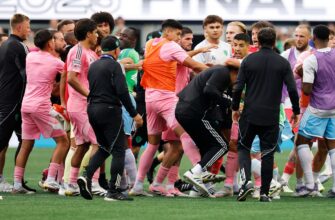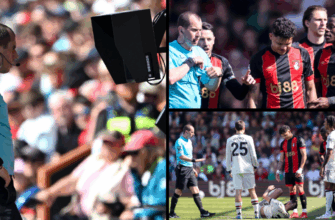In the often-idyllic world of youth football, a recent incident originating from Collegno, Italy, has peeled back the veneer of innocence, revealing a complex narrative far removed from initial headlines. What began as a widely condemned act of violence against a young goalkeeper swiftly transformed into a sobering lesson on judgment, responsibility, and the unforgiving eye of the digital age.
The story first garnered widespread attention when a 13-year-old goalkeeper, identified as Thomas, was reportedly subjected to a violent assault during a match. The public outcry was immediate, painting Thomas as a victim of appalling adult misconduct. Italian football legends, including the current national team goalkeeper Gianluigi Donnarumma, and icons Gianluigi Buffon and Dino Zoff, rallied behind the young player. Donnarumma, in a touching gesture, extended an invitation to Thomas to visit Coverciano, the revered training ground for Italy’s national team – a dream for any aspiring footballer. Buffon and Zoff offered words of profound encouragement, urging him not to give up on his passion, reinforcing the collective support for a perceived injustice.
However, as is often the case in our hyper-connected world, more evidence surfaced. A video capturing the full extent of the pitch brawl began circulating, casting a starkly different light on the “Collegno Incident.” This footage, meticulously scrutinized by sports authorities, unveiled a more nuanced, and frankly, more disturbing truth. Thomas, the erstwhile emblem of youthful victimhood, was not merely an innocent bystander. According to the subsequent ruling by the sports judge, Thomas was observed striking an opponent who was already incapacitated and lying on the ground. The incident, originally framed as a simple assault on Thomas, was reclassified as a “despicable event” and a “violent brawl” (rissa tanto violenta), with Thomas playing a significant, and culpable, role.
This critical shift in understanding presented the Italian Football Federation (FIGC) with an unenviable dilemma. The initial, heartfelt invitation to Coverciano, extended in good faith and with the best intentions, suddenly hung in the balance. How could the national footballing body celebrate a young player whose actions were now deemed to have contributed to violent, unsportsmanlike conduct, even if he was also a recipient of aggression? The answer, as difficult as it was, became clear: the invitation was rescinded. The symbolic gesture, intended to uplift a young spirit, could not stand in the face of adjudicated misconduct. Instead of a visit to footballing glory, Thomas received a one-year suspension from the sport, effectively closing the doors to Coverciano for the foreseeable future.
This unfortunate episode extends beyond the confines of a single youth match. It serves as a potent reminder of several uncomfortable truths prevalent in modern youth sports. Firstly, the rush to judgment, fueled by incomplete information and amplified by social media, can create a distorted reality. Public empathy, while noble, should ideally be reserved until all facts are thoroughly examined. Secondly, it spotlights the persistent issue of violence in junior leagues, often instigated or exacerbated by adults who fail to embody the very principles of sportsmanship they should be teaching. The presence of a parent physically assaulting a minor during the incident underscores a deeply concerning erosion of boundaries and respect. While the initial aggression from an adult towards Thomas was unequivocally wrong and will likely carry its own penalties, it does not absolve Thomas of his own actions.
The irony is palpable: the very system designed to nurture talent and instill discipline found itself retracting an honor previously offered, not for lack of talent, but for a glaring deficit in conduct. The ball, in this case, wasn`t just kicked out of bounds; it was kicked into a moral gray area. For parents, coaches, and administrators alike, the Collegno incident is a somber call to re-evaluate the culture surrounding youth football. It’s a plea for clearer boundaries, swifter, more informed judgments, and a renewed emphasis on fair play, mutual respect, and emotional regulation – qualities far more valuable than any trophy or coveted invitation.
Ultimately, the Collegno case is not just about a game, a boy, or a ban. It`s about the responsibility that comes with being part of a team, the integrity required to uphold the spirit of sport, and the collective effort needed to ensure that the beautiful game, at every level, remains truly beautiful.









